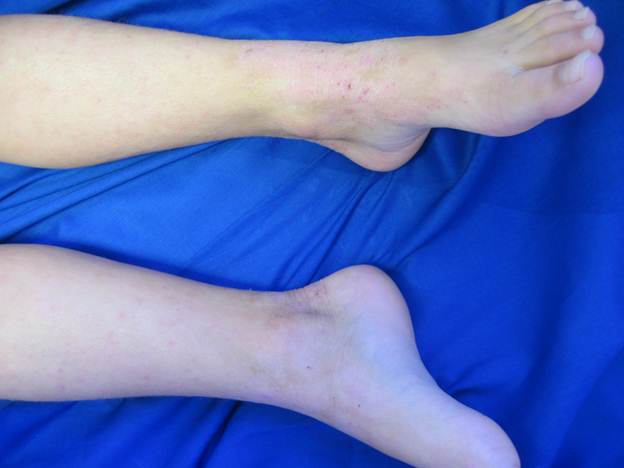
Eczema can range in severity from a mild annoying red patch on your arm to a total body, weeping, infected rash. At our NYC, Brooklyn, and LIC locations, we’ll match our therapeutic approach to your condition’s severity.
Eczema simply means “inflamed skin”. Skin can become inflamed for a number of reasons, but we’ll cover the big three in this article: Contact, Atopic, and Irritant. Part of the eczema confusion stems from the fact that ALL eczemas look very similar – chapped, red, scaly skin. Another item that all eczemas share is their therapy. Proper hydration is the absolute cornerstone for any regimen aimed at calming all eczemas. A well moisturized skin barrier is less susceptible to environmental allergens of all kinds and will begin the recovery process. Sometimes an anti-inflammatory prescriptive may be required in addition to a hydrating barrier repair.
This form of eczema can be caused by a dizzying number of natural as well as household and workplace chemicals. The most infamous form of contact dermatitis is poison ivy, so called “rhus dermatitis” for the rhus allergen found within this plant. The onset of CE can evolve over time – I can diagnosis this condition from an over-the-counter product even after a patient’s been using it for years without incident. The immune system is exposed to a certain allergen several times until one day our body triggers an allergic response that can persist for a lifetime.
Certain clues for a contact dermatitis include a bilateral (both sides) rash. The most common locations affected are the neck and eyelids. Interestingly, these are areas most commonly exposed to foreign chemicals (usually from fingers-to-face contact). Most chemicals able to provoke CE are small molecules that can penetrate human skin. Your immune system recognizes a foreign substance (“antigen”) and then mounts an immune response to it, resulting in itchy, scaling skin. The top 4 CE allergens within our New York practice are:
1. nickel (and nickel-plated objects)
2. fragrance,
3. neosporin
4. propylene glycol (a common preservative)
If you’ve been experiencing a recurrent rash that is intermittently worse, patch testing can be performed to determine the offending botanical, metal, or chemical. Short-term therapy can be given to quell an active rash, but the best solution is to avoid the offending chemical altogether.
For more information on contact dermatitis from the National Institute of Health (NIH), click on: https://www.nlm.nih.gov/medlineplus/ency/article/000869.htm
This is usually an inherited skin condition that stems from a general sensitivity to allergens. For example, even a slight increase in dust or pollen counts can trigger an inflammatory cascade that will leave skin red and itchy. There is not a specific allergen identified as in CE, but rather a general hypersensitivity to environmental triggers. If you were to place patients with AE in a plastic bubble, protected from the environment, their skin would clear almost entirely. Common triggers for atopic eczema include:
Heat and sweating
Pet fur and dander
Wool and synthetic fibers like nylon
Tobacco smoke
Fragrances or colorants in shampoos, detergents, soaps, and moisturizers
This is the simplest form of eczema caused by rapid dehydration. Chapped lips and cheeks from windburn is perhaps the most common manifestation of this eczema. Any environmental feature that can rapidly desiccate (dry) skin is considered an irritant. Even water within a wet bathing suit can evoke red, itchy skin, and can be considered an irritant. Some mechanical forces can trigger an irritant dermatitis as well. Straps and belts are notorious induces of irritant eczema. Removal of the irritant is, of course, the first step toward improving the resultant inflammation. Next is repairing the skin barrier.
As discussed above, the key to any eczema is 1) Removing any contributors to the eczema and 2) Re-hydrating the skin so that it remains protected.